#kyoto costume institute
Text

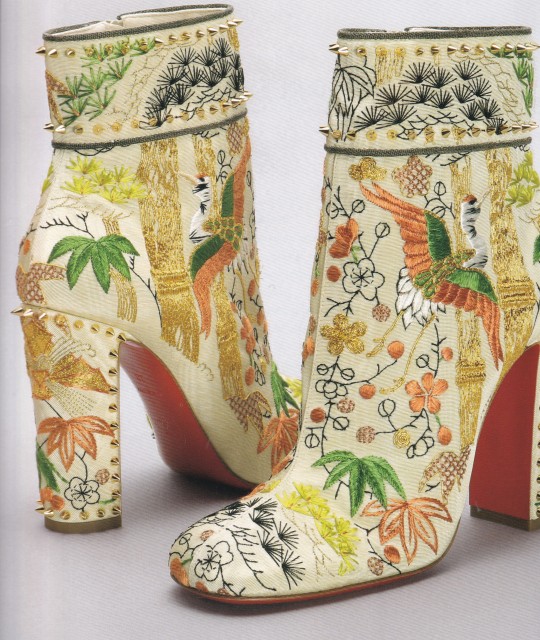



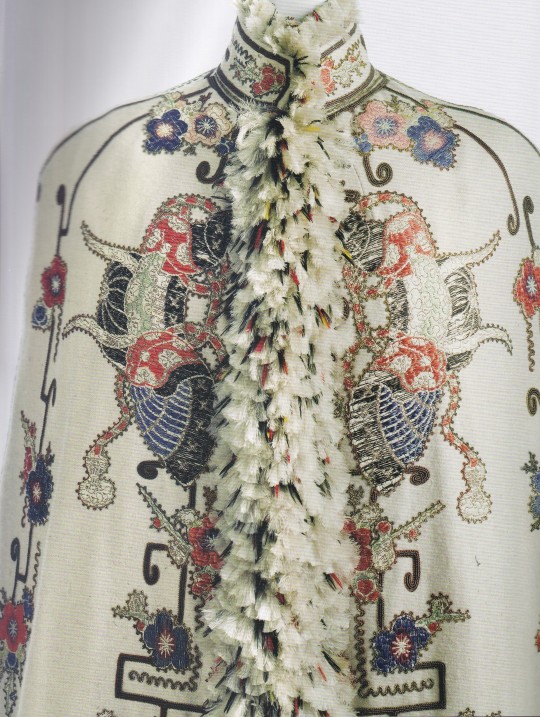





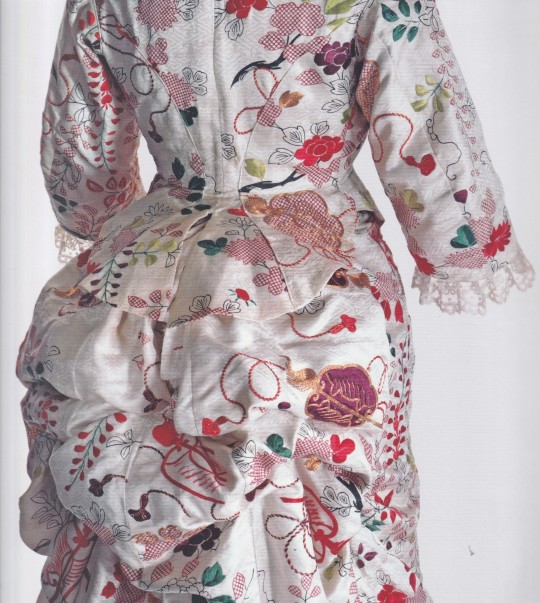
Kimono Refashioned
Japan's Impact on International Fashion
Edited by Yuki Morishima and Rie Nii, Essays by Akiko Fukai, Cynthia Amnéus, Katherine Anne Paul, Karin G. Oen, Yuki Morishima, and Rie Nii
Asian Art Museum, San Francisco 2018, 134 pages, 24x28cm, ISBN 978-0-939 117-85-7
euro 30,00
email if you want to buy [email protected]
Spanning East to West, kimonos and kimono-influenced designs are everywhere, from high-end couturiers such as Yohji Yamamoto and Gucci to Main Street fashion chains such as Uniqlo and H&M. In Kimono Refashioned, contributors explore the impact of the kimono on the fashion world, charting how these striking and elegant unisex garments came to transcend their traditional Japanese design origins. Featuring highlights from the renowned Kyoto Costume Institute, this lavish volume documents Japanese and Western designs, men's and women's apparel, and both exacting and impressionistic references to the kimono. Contributors from the Asian Art Museum of San Francisco, the Newark Museum, and the Cincinnati Art Museum join curators from the Kyoto Costume Institute to reflect upon the wide-range of motifs used to decorate kimonos, the form and silhouette of the Japanese traditional dress, and how its basic two-dimensional structure and linear cut have been refashioned into a wide array of garments. As captivating as the kimono itself, this book will be a must-have for fashionistas and Asian art aficionados alike.
02/02/24
#Kimono Refashioned#Kyoto Costume Institute#fashion exhibition catalogue#Cincinnati Newark SanFrancisco 2018 2019#Yohji Yamamoto#Rei Kawakubo#fashion books#fashionbooksmilano
15 notes
·
View notes
Text
An archive favorite for #SackBackSaturday: Good morning, sunshine! A yellow silk satin quilted robe à la francaise, England, ca. 1750-1755. Via The Kyoto Costume Institute For additional information: kci.or.jp/en/archives/di…
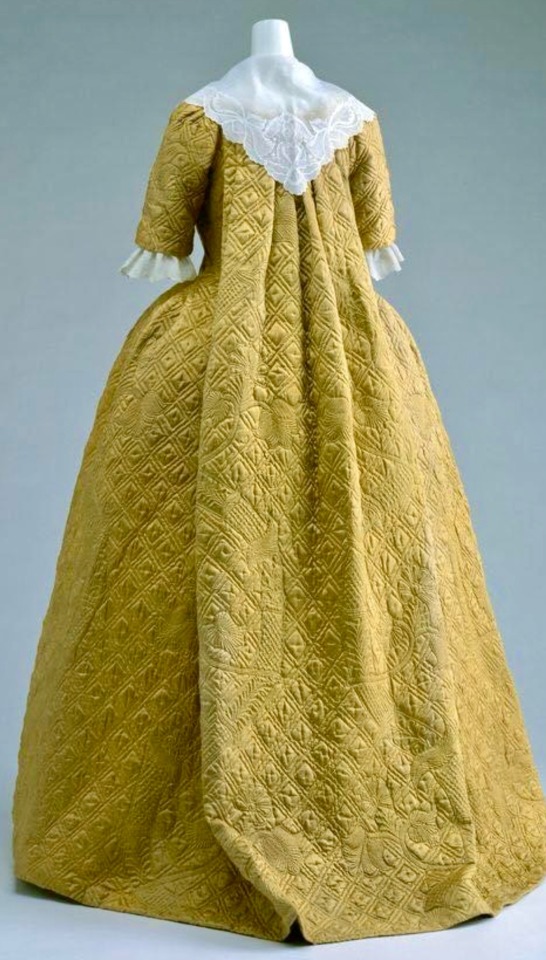
6 notes
·
View notes
Text

Ball gown by House of Worth, 1894. Kyoto Costume Institute.
#dark academia#light academia#academia aesthetic#classical#academia#escapism#classic literature#books#books and libraries#architecture#ball gown#royal core#cottage core#aesthetics#1800s#19th century#kyoto costume institute#fashion#historical
35 notes
·
View notes
Text
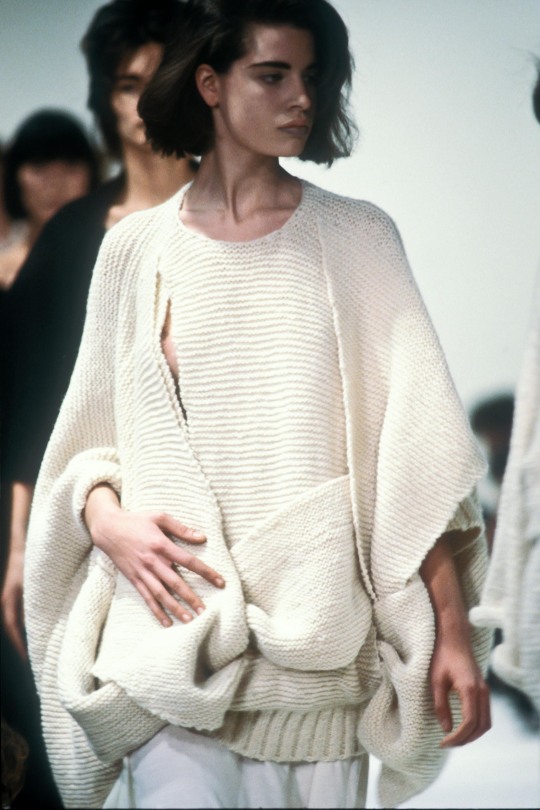

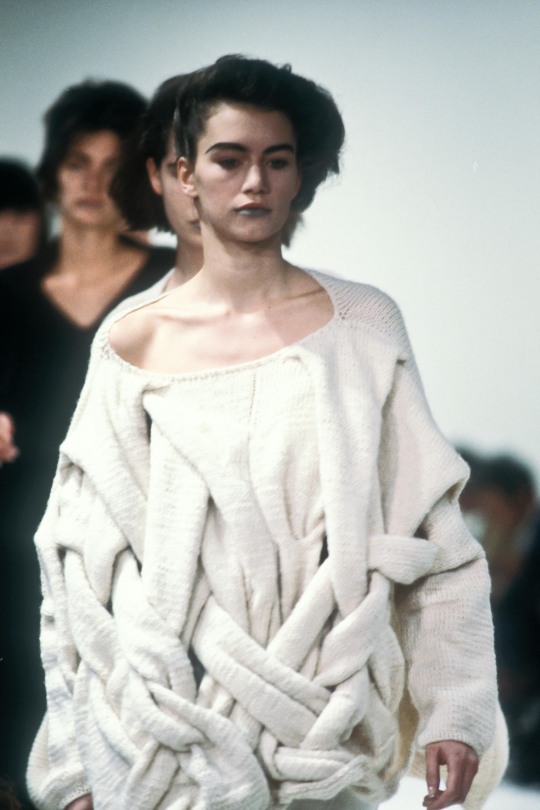
Knitwear at Comme des Garcons FW83
#the first is in the kyoto costume institute but it's a revelation on body#roots of fw14 collection there from the start#comme des garçons#rei kawakubo#fw83#mu
2 notes
·
View notes
Text
name a doll with this silhouette

#I'm going through my ye olde bige booke of Kyoto Costume Institute#I haven't read it in years so this jumped out at me 😂
2 notes
·
View notes
Text
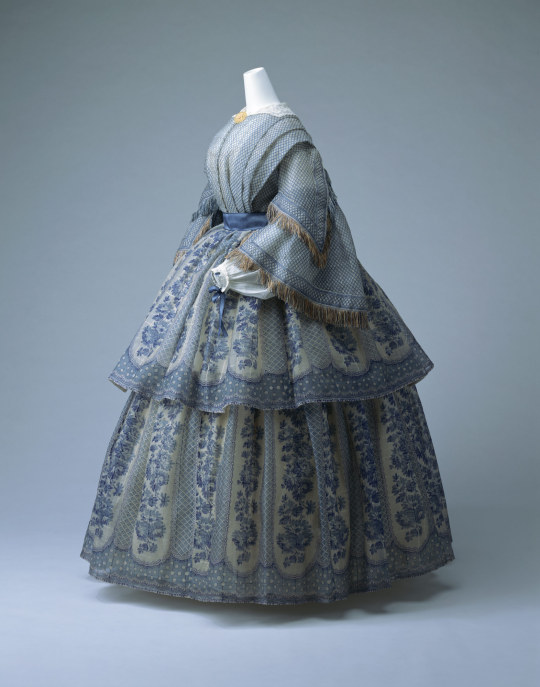
Day Dress
c.1855
England
This type of widely protruding skirt that appeared around the middle of the 19th century came to be known later under the name of the "crinoline style." As can be seen with this dress, large design motifs proved immensely effective on these voluminous skirts. The border pattern here is wood-block printed and repeats every 20.6 cm. Compared to small-scale designs, large patterns require a solid technique to avoid misalignment of the print colors. Considering that this mixed fabric of silk and wool is a material hard to print on, this dress with its bright and cheerful colors is a particularly fine example on how much cloth printing techniques had evolved.
The Kyoto Costume Institute
#day dress#fashion history#historical fashion#1850s#crinoline era#19th century#england#victorian#1855#blue#white#floral#flower print#kci
3K notes
·
View notes
Text
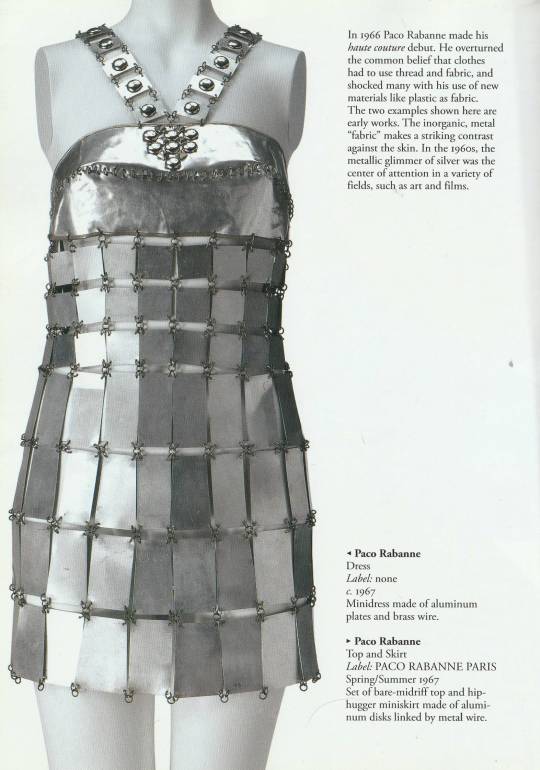

paco rabanne c. 1967 in fashion: a history from the 18th to the 20th century - kyoto costume institute (2015)
4K notes
·
View notes
Text

Day Dress
c. 1909
Kyoto Costume Institute
#Edwardian#edwardian gown#edwardian era#edwardian fashion#edwardian dress#fashion history#historical fashion#1900s#1909#frostedmagnolias#pink
883 notes
·
View notes
Text
Dress, c. 1874
Charles-Frederick Worth
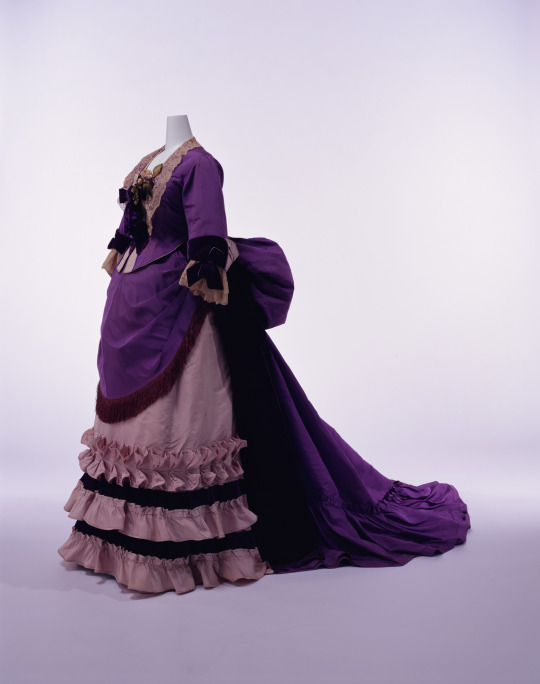
Purple and pale purple silk faille set of bodice and skirt; silk lace and purple velvet bows at neck and cuffs; apron-shaped overskirt with purple silk fringe at front; skirt with three flounces of self-fabric and velvet placed alternately.
The Kyoto Costume Institute
425 notes
·
View notes
Text

Dress
1780s
The Kyoto Costume Institute
"A dress of a blue and pale blue thin-striped pattern, along with a soft luster. In order to pull up the gown's hem, a cord is attached to it, which makes it possible to wear as robe à la Polonaise, as well. In the latter half of the 18th century, clothing went toward simplification in particular women's clothing advanced toward a functional direction without the formality. Even textiles for dress with a light texture entered the mainstream. Moreover, the preference to striped patterns that became the fashions that involve all the classes from this period also shows such a tendency."
150 notes
·
View notes
Text
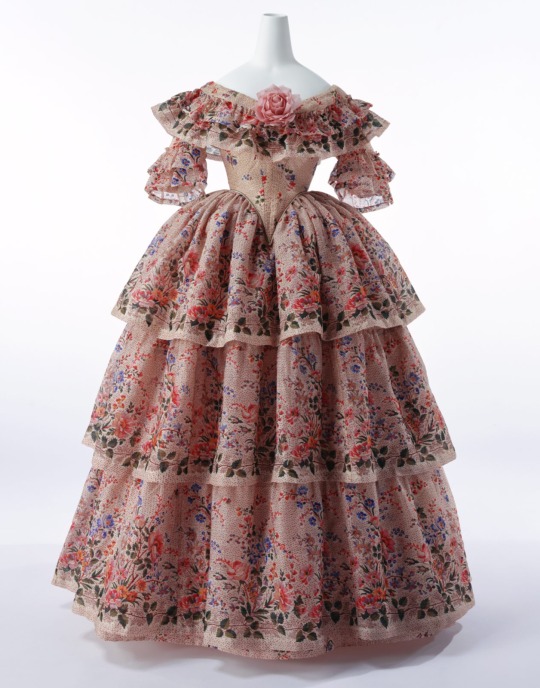
Evening dress, French, c. 1855
Crème silk and wool mixed gauze with floral print; triple-flounced skirt.
[Photo from the Kyoto Costume Institute, inventory number AC9475 97-23-6AB]
1K notes
·
View notes
Text

Evening dress. c. 1900. Kyoto Costume Institute.
I am so absolutely in love with this dress, I don't even know where to start. The colour, the embroidery, the sleeves, everything
2K notes
·
View notes
Text

Evening dress c. 1908 by Callot Soeurs
-Kyoto Costume Institute
#online diary#inspo#vintage#kyoto#vintage fashion#fashion history#20th century#japan#aesthetic#vogue
65 notes
·
View notes
Text

Schiaparelli's Apollo of Versailles velvet cape. Kyoto Costume Institute.
#schiaparelli#fashion#art#fashion photography#art fashion#costume design#gold#gold design#versailles#costume details#velvet#embriodery#design#gold details#gold embroidery#couture#haute couture#schiaparelli haute couture#fashion design#fashion details#apollo#fashion inspo#fashion art#fashion inspiration#fashion blog#art blog#art design#art detail#couture fashion#high fashion
38 notes
·
View notes
Text

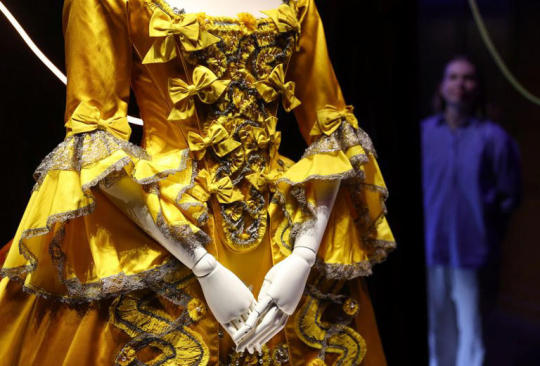
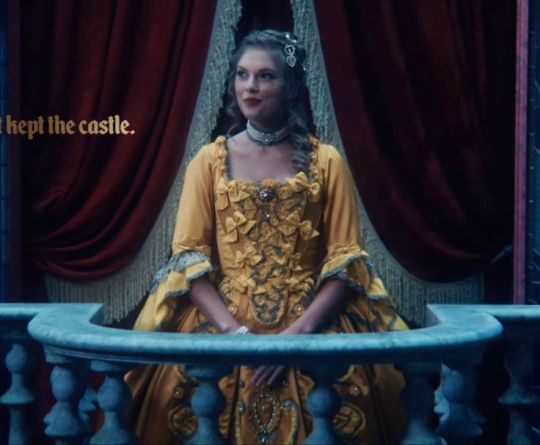

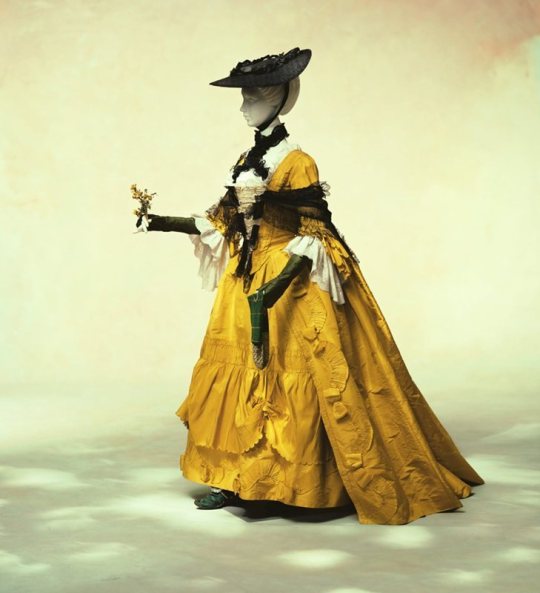
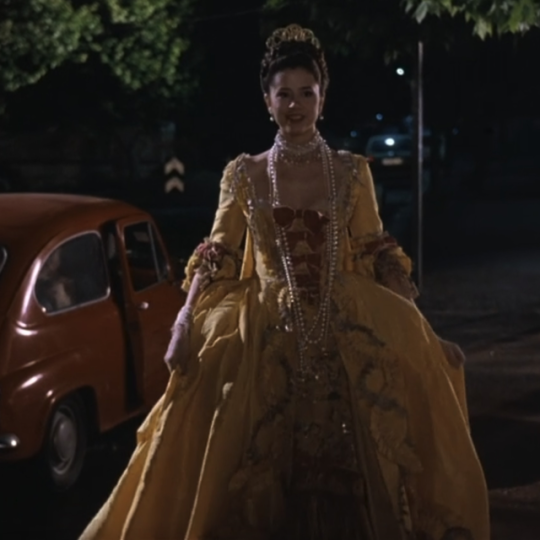
This one is for the swifties.
I case you've been living under a rock, some Taylor Swift looks are on display at the Victoria & Albert Museum, and OF COURSE they have this yellow dress from the end of the Bejeweled video (I could not see the back, but I asume it is an English gown).
This dress seems to have been made for that video, and I couldn't find the costume designer credit, but I found a pair of dresses that could have been references for it (because OF COURSE I love yellow 18th century dresses): a robe à la française from the Kyoto Costume Institute and one designed by James Acheson for Dangerous Liaisons, and also seen in 1994 film Barcelona (see the full post about this dress from Recycled Movie Costumes here).
If you happen to be in London for the tour of any other reason and want to check it out, it is displayed in the 2nd level, in room 110, Prince Consort Gallery:

Images from top:
1 & 3 - stills from the Bejeweled video, 2022.
2 & 4 - Victoria & Albert Museum.
5 - Robe à la française, 1760s, Kyoto Costume Institute.
6 - Mia Sorvino wearing a dress designed by James Acheson in the movie Barcelona, 1994.
22 notes
·
View notes
Photo
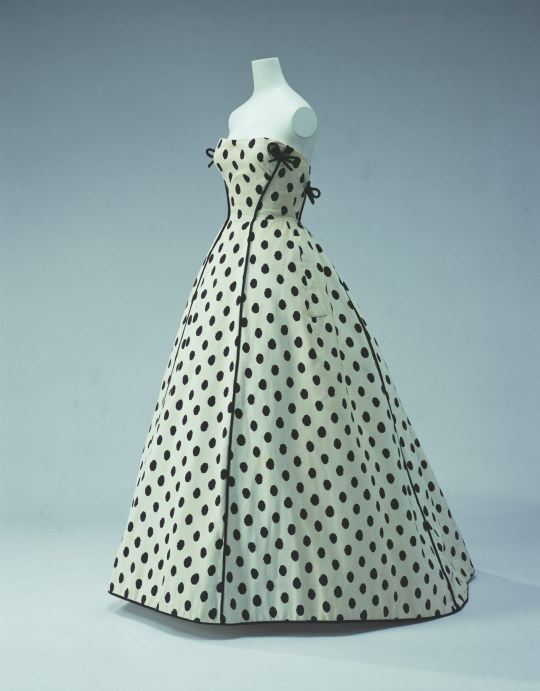
ab. 1953 Dress by Jacques Fath
white cotton piqué printed with black polka-dot pattern; black piping ornamentation
(Kyoto Costume Institute)
359 notes
·
View notes